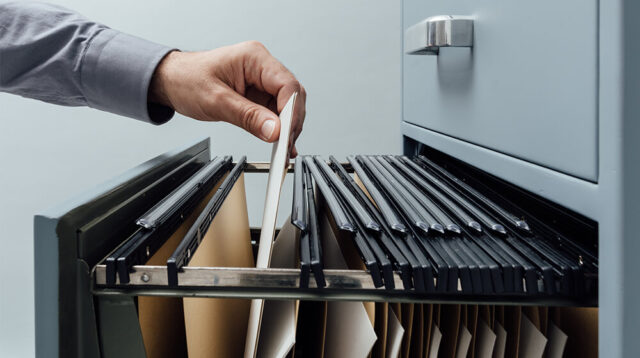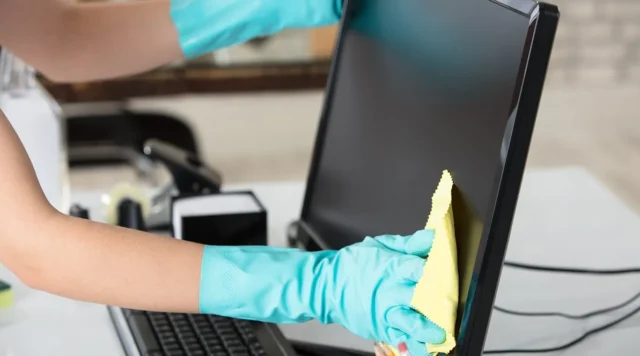
Organizing a student workplace is essential for creating a productive, and efficient environment conducive to studying and learning. With the right organizational strategies and tools, you can maximize space, stay focused, and enhance your overall academic performance. Here are some tips and tricks from Royal Craft Wood to help you organize your student workplace effectively.

- Clear the Clutter: Begin by decluttering your workspace. Remove any unnecessary items, such as old papers, broken stationery, or unrelated materials. Keep only the essentials that you regularly use for studying.
- Optimize Desk Space: Maximize available desk space by using desk organizers and storage solutions. Consider investing in a desk organizer set from Royal Craft Wood, which includes compartments for pens, pencils, sticky notes, and other small items. This keeps your desk tidy and prevents items from getting lost or scattered. You can even use this silverware drawer organizer from Amazon which makes a suitable organizational solution for all types of accessories and supplies.
- Utilize Vertical Space: Make use of wall space by installing shelves or hanging organizers. This allows you to store books, folders, and other study materials within reach. Find simple wall-mounted shelves that are not only functional but also visually appealing, adding a touch of elegance to your workspace.
- Prioritize Ergonomics: Pay attention to how you can use your space to best create a comfortable and healthy workspace. Ensure that your chair is adjustable and provides proper support for your back. Use a desk lamp with adjustable lighting to minimize eye strain. Ergonomic desk accessories can help you maintain good posture and reduce discomfort during long study sessions.

- Create a Filing System: Implement a filing system to keep your papers organized. Use file folders or binders to categorize and store lecture notes, assignments, and handouts. Label each folder or binder with clear and identifiable titles to easily locate specific documents when needed.
- Cable Management: Say goodbye to tangled cords with cable management solutions. Keep your workspace organized and safe by using cable clips or sleeves to neatly organize power cords, chargers, and headphones. Not only will your workspace look better, but you’ll also reduce the risk of accidents.
- Establish Zones: Divide your workspace into different zones based on your study needs. Create a zone for computer work, a zone for writing and note-taking, and a zone for reference materials. Assign specific areas for each task to streamline your workflow and maintain focus.
- Stay Organized with a Whiteboard or Planner: Keep track of your important dates, deadlines, and tasks with a planner or whiteboard. It’s the best way to manage your time, avoid missing crucial assignment deadlines, and stay on top of your schedule. Be sure to check out some easy-to-mount whiteboards for your wall or desk that remove without wall damage.

- Maintain Regular Cleaning: Dedicate some time each week to clean and organize your workspace. Remove any clutter, dust surfaces, and wipe down your equipment. A clean and organized workspace promotes a fresh and focused mindset. Be sure to keep your Royal Craft Wood storage organizers in pristine condition by emptying them and wiping them down regularly so they stay dust and debris free.
- Personalize and Inspire: Add personal touches to your student workplace to make it more inspiring and enjoyable. Display motivational quotes, photos, or artwork that uplifts your mood and motivates you to study. Incorporate elements that reflect your personality and make the space uniquely yours.
- Personalized Organization: While we already said that using desk organizers and storage solutions is important, you also need to note that organization methods can vary from person to person. What works for one student may not work for another. It’s essential to find a system that suits your preferences and study habits. Experiment with different organizational tools and setups to discover what works best for you.

- Digital Organization: In today’s digital age, it’s crucial to consider digital organization as well. Apart from physical papers and materials, students often have electronic files, online resources, and digital notes to manage. Use digital tools like cloud storage services, note-taking apps, and task management software to keep your digital materials organized and easily accessible.
- Time Management Techniques: It’s worth exploring various time management techniques to enhance productivity. Consider techniques like the Pomodoro Technique (working in focused intervals with short breaks), time blocking (allocating specific time slots for different tasks), or using productivity apps that help manage your time and tasks effectively.
- Minimizing Distractions: Creating an organized workspace also involves minimizing distractions. In addition to organizing physical and digital materials, consider removing distractions from your study area. Keep your mobile phone on silent mode or in another room, block distracting websites or apps, and create a quiet and peaceful environment that promotes concentration.
- Mindset and Well-being: While we already touched on maintaining a clean workspace, it’s essential to highlight the importance of mental well-being and a positive mindset. Incorporate practices like mindfulness, relaxation exercises, or a brief physical activity routine to help manage stress and maintain focus. Take breaks when needed, engage in hobbies or activities that bring you joy, and ensure you’re taking care of your overall well-being.

- Collaboration and Group Study: This article focuses on individual study spaces, but it’s important to acknowledge that students often engage in collaborative projects or group study sessions. Consider creating a separate area or providing resources for group work, such as a whiteboard for brainstorming or a shared digital workspace for collaborative online projects.
- Sustainability and Eco-Friendly Practices: While organizing your student workspace, consider incorporating eco-friendly practices. Use reusable or recyclable materials when possible, reduce paper waste by opting for digital notes and materials, and choose sustainable storage solutions like bamboo or recycled materials. Being mindful of the environmental impact can contribute to a healthier workspace and a more sustainable future.

By implementing these tips and utilizing the organizational tools and accessories from Royal Craft Wood, you can create an efficient and inviting student workplace. Enjoy the benefits of an organized space that enhances your concentration, productivity, and overall academic success.






